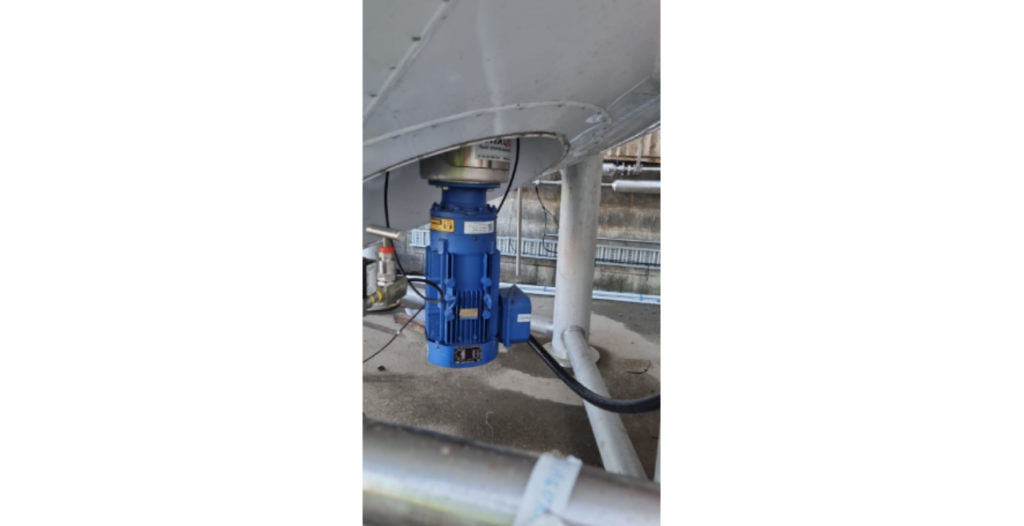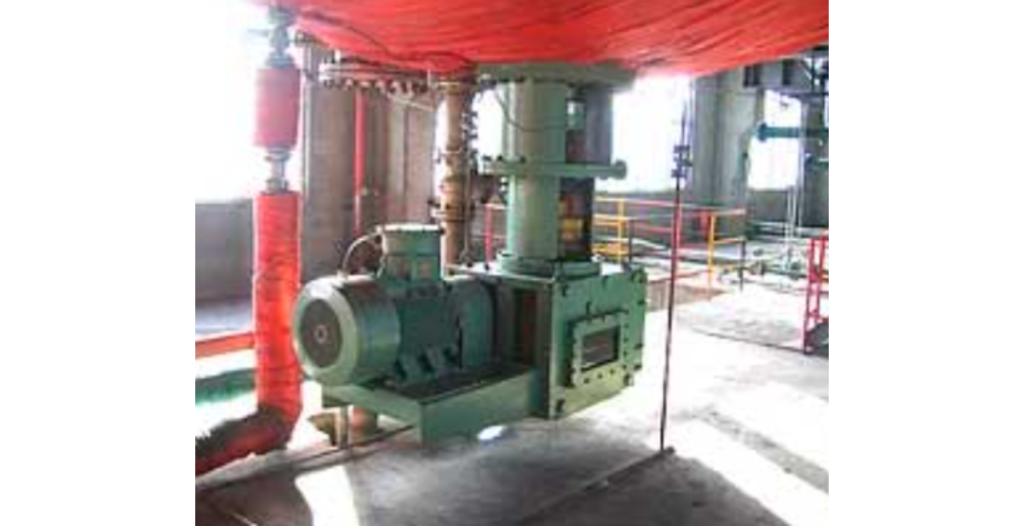Agitators Technology
Bottom Entry Agitators
Bottom entry agitators, as the name suggests, are industrial mixing devices designed to agitate and blend liquids and suspensions from the bottom of a tank or vessel.
These agitators work by generating flow and turbulence in the liquid, promoting mixing and homogenization. The working principles of bottom entry agitators involve the following key aspects:
Design: A typical bottom entry agitator consists of an agitator shaft connected to a motor and impeller. The agitator is mounted on the bottom of the tank or vessel, with the impeller submerged in the liquid.
Agitation: When the motor is activated, it drives the agitator shaft and impeller. The impeller’s rotation creates fluid motion by pushing liquid upwards and generating turbulence. This promotes mixing, blending, and suspension of solids or other materials within the liquid.
Flow Patterns: Bottom entry agitators create various flow patterns, including radial flow (outward and inward movement from the center) and circular flow along the tank’s bottom and walls. These flow patterns facilitate the effective mixing and distribution of materials.
Speed and Direction: The speed and direction of the impeller’s rotation can be adjusted to control the mixing intensity and direction, allowing customization for specific applications.
Impeller Types: Different impeller designs are available to suit different mixing requirements, such as high shear or gentle mixing.

Advantages:
Efficient Mixing: Bottom entry agitators provide efficient and thorough mixing of liquids, ensuring uniformity and consistency.
Suspension of Solids: They are effective at suspending and dispersing solids, preventing sedimentation in the bottom of the tank.
High Capacity: Bottom entry agitators can handle large tank volumes, making them suitable for industrial-scale processes.
Energy Efficiency: These agitators often require less power compared to some other mixing methods, resulting in energy savings.
Customizable: They can be customized for specific applications by selecting the appropriate impeller type and adjusting speed and direction.


Disadvantages:
Space Limitations: The design of bottom entry agitators can limit the usable space at the bottom of the tank, which may be a constraint in some applications.
Maintenance: While generally reliable, these agitators require regular maintenance to ensure proper functioning and prevent wear and tear.

Applications: Bottom entry agitators are used in a wide range of industries and applications, including:
Chemical processing: Mixing chemicals, reagents, and catalysts.
Water and wastewater treatment: Agitating and mixing in water and wastewater treatment processes.
Pharmaceutical manufacturing: Blending pharmaceutical ingredients and suspensions.
Food and beverage production: Mixing ingredients in food and beverage processing.
Mining and minerals: Agitating and suspending ores and minerals in mineral processing.
Pulp and paper: Stirring pulp stock in paper manufacturing.

Summary: Bottom entry agitators are versatile industrial mixing devices designed to efficiently agitate and blend liquids and suspensions within tanks and vessels.
They offer advantages such as efficient mixing, suspension of solids, and high capacity, making them suitable for various industrial processes.
While they may have space limitations and require maintenance, their ability to generate effective flow patterns and ensure uniform mixing makes them essential for achieving product consistency in numerous applications across different industries.


 Sales & Marketing:
Sales & Marketing:  Service Supports:
Service Supports:  Website:
Website: 